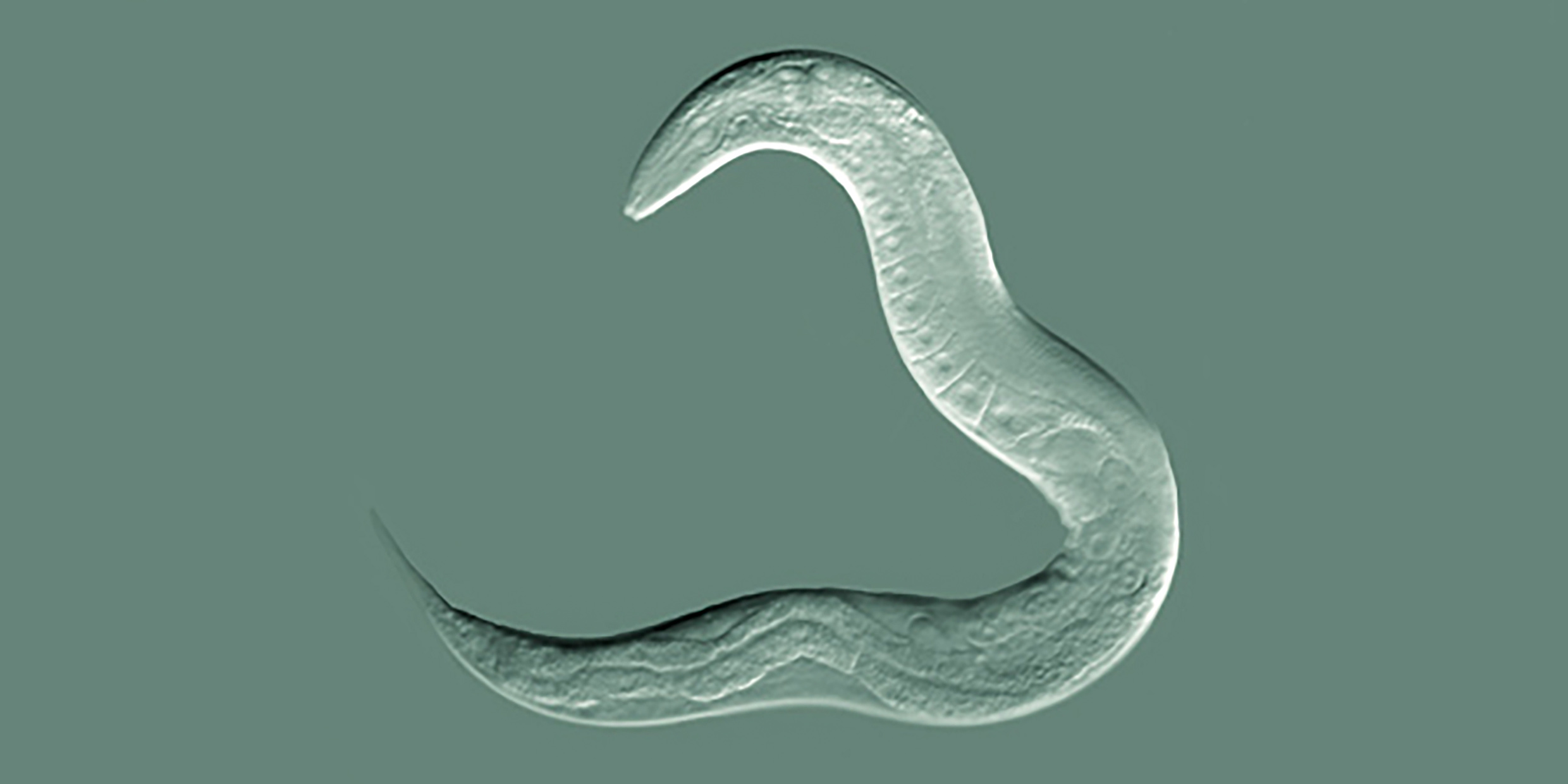Originally published 13 November 1995
“Some are born great, some achieve greatness, and some have greatness thrust upon ’em,” says Malvolio in Shakespeare’s Twelfth Night, quoting Maria’s letter.
I can’t think of any worms in the first two categories, but as a candidate for “thrust-upon” greatness I offer the nematode worm Caenorhabditis elegans.
C. elegans is the neurobiologist’s favorite animal. This lowly creature has been chosen from a million species of its nematode cousins to become one of the best understood animals on Earth.
Nematodes are threadlike worms. They range in length from a millimeter to a meter. A handful of loam might contain a thousand. They live virtually everywhere — soil, water, desert sand, arctic ice, hot springs, and as parasites of plants and animals. Pinworms and hookworms, familiar parasites of humans, are nematodes.
Years ago, the American parasitologist N. A. Cobb asked us to imagine everything in the world suddenly disappearing, including the body of the Earth, except for nematodes. The world would still be recognizable, he said, as a ghostly hollow sphere of worms. Mountains, valleys, rivers, ponds, plants, and animals would still be distinguishable by the clouds of worms that used to inhabit them.
From this vast host, C. elegans has been lifted from obscurity to scientific fame. I did an electronic search of the biological literature, 1988 to the present. Nearly 800 journal articles discussed C. elegans. This is far behind the bacterium E. coli, with 21,594 entries, the all-time favorite subject of biological researchers, and not close to drosophila, the famous fruit fly of genetic experimenters, at 5611 entries. But our little nematode is no slouch. It is a rising star.
Why have these tiny worms, as thin as spider silk, as short as the diameter of a pinhead, been rocketed to fame? Their life cycle is quick, a three-day generation time, which is handy for genetic studies. They reproduce happily in the lab. They can be frozen for storage, and revived as needed. Best of all, they are transparent; their insides are as easy to see as their outsides.
And they are simple. Wriggle, eat, defecate: life reduced to basics. They are mostly self-fertilizing, so they don’t even have to bother looking for a mate. For these minimal activities, C. elegans requires a mere 959 body cells, including 302 neurons, no more, no less. The “parts list” of this tiny worm is about as long as that of your washing machine — and as exactly known.
We know how C. elegans is put together, cell by cell, and even how the cells divide and differentiate from the single cell of the fertilized egg. The task now is to discover how the genes direct the construction of the worm. As a first step, scientists are trying to completely determine the “four-letter” DNA code that is the blueprint for making a C. elegans nematode.
Every creature on Earth shares the same DNA chemistry. The genetic code is a sequence of four chemical molecules, called nucleotides, strung along the DNA double-helix. C. elegans has approximately 100 million nucleotides in its DNA, compared to 3 billion nucleotides for humans. About a quarter of the worm’s have now been determined.
Already it is clear that many of the worm’s genes appear to be closely related to certain human genes, including genes that cause diseases such as early-onset Alzheimer’s and cystic fibrosis. Some of the worm’s chemical machinery controlling neuron activity also appears to be similar to our own. We are more closely related to the lowly worm than we might care to admit.
It won’t be long before researchers have determined the complete genetic code of C. elegans, mapped the genes on the worm’s six chromosomes, and linked genes to developmental features. Then little C. elegans will be as completely described as any multi-celled animal on Earth — every nucleotide, every gene, every cell.
Will that be the end of the mystery of life? Not at all! It is only the beginning. The more we learn about the machinery of life, the more wonderfully miraculous it seems.
C. elegans may have about as many cells as your washing machine has parts, but your washing machine doesn’t start with one part (a gasket, say) and grow into a thousand (gaskets, drums, valves, dials, etc.). Your washing machine doesn’t squirm, eat, and defecate. Your washing machine doesn’t make other washing machines. Your washing machine doesn’t colonize every habitat on Earth.
We have much, much more to learn about the machinery of life. For example, how do those DNA strands, which are snarls to start with, unwind and reproduce over and over without getting hopelessly tangled? How are errors in the DNA code corrected, at lightning- fast speed? How does a “one-dimensional” genetic code (a sequence of nucleotides) reliably build three-dimensional shapes? How does a DNA molecule always find just the right chemical compounds it needs to reproduce itself — or make a protein? How do genes tell some cells to become gut and other cells to become muscles?
How, how, how? Some big surprises may be in store before we have answered all these questions. C. elegans is one of the best-understood animals on Earth, but it is still a millimeter-long bundle of mystery.
A lowly worm, thrust to greatness by human curiosity.
The sequenced genome of C. elegans was first published in 1998. It was the first multi-celled animal for which this was accomplished. ‑Ed.



